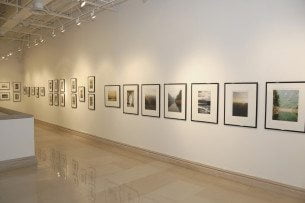

Environment
Exploring Eco-Art Through Green Friendly Travel
If you’re an artist seeking to experience a wide variety of great works, you may feel a lot of pressure to travel internationally, a habit with a less than sustainable carbon footprint. One alternative to traveling to see great art is to visit artists’ studios from the comfort of your own home through video studio visits. Or you might explore local neighborhood galleries and meet some rising talents.
Another green alternative to hopping the next flight to Europe to take in fine arts is to explore the eco-art scene. Eco-art is a rising art form that emphasizes sustainable art practices and the role of the environment in art. So pack your bags for some slow speed travel and get ready to encounter art in the environment.
Paint On The Water
Head on down to Galveston Bay and avail yourself of the kayak/art tours available there this spring. Run through an organization called Artist Boat, participants hit the water in individual kayaks and participate in an art lesson – then you get to paint, but you’re not getting out of your boat just yet. On Artist Boat tours, tourist-artists get the experience of painting on the water. It’s a challenging task, but something of a once in a lifetime opportunity.
Beauty In The City
When you think of New York City, eco-art – or even eco-art friendly spaces – are not the first thing to come to mind. At best you might summon images of the High Line, a park built on abandoned elevated train tracks. But now artist Eve Mosher is working to change the less than green perception of New York City through her work.
In 2012, Mosher launched a project called Seeding The City. The project featured 1000 small rooftop gardens filled with native plants throughout Manhattan and Brooklyn. More recently Mosher has been working on HighWaterLine, a project about climate change. HighWaterLine also highlights New York City, though you can also see parts of the project in Miami, Philadelphia, and several other cities.
In The Soup
We’ve all been to the beach and seen less than pristine waters marred by floating trash. Taking on one especially high pollution area in the North Pacific, Mandy Barker’s SOUP captures the impact of discarded plastic and other detritus on the waters of the region. The area in Barker’s work is so heavily polluted that it’s known as The Garbage Patch, as though garbage just springs up their like plants. Barker hopes that her work can impact local practices that harm the environment – no one wants to be part of that soup.
Flash Trash Floods
Computer and other electronic waste is one of the largest contemporary contributors to the build-up of trash in the United States today. Because the technological revolutions that resulted in this, however, are so recent, all of this waste has surged in like a flood. Susan Stockwell captures this in her installation piece, Flood on display at the American Art League in Houston. Running from ceiling to floor, when will this flood of trash end?
Eco-art is part material and part message, hoping to capture our eyes and minds at a moment in time when our little planet is increasingly polluted. So slow down your travel and pay attention – eco-art or the potential for it is all around you.


















